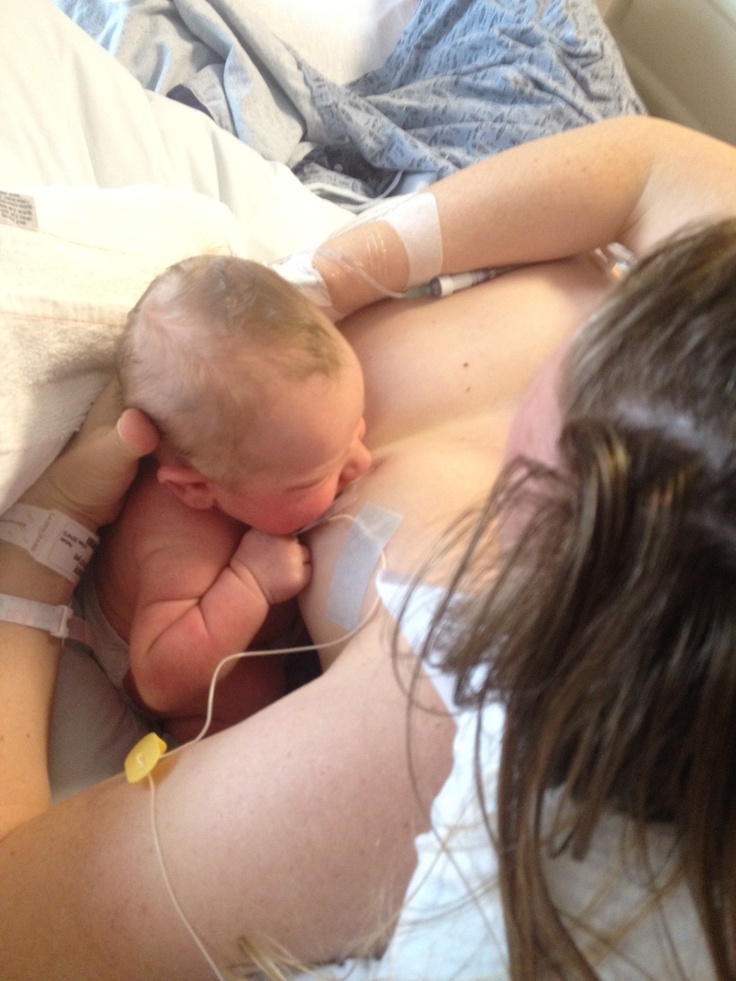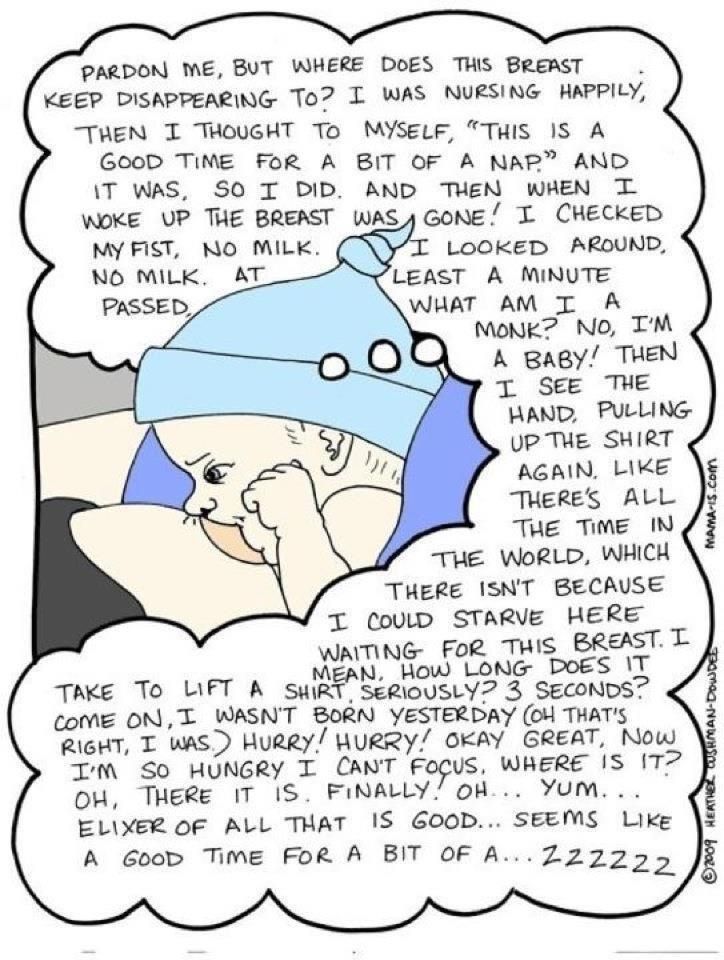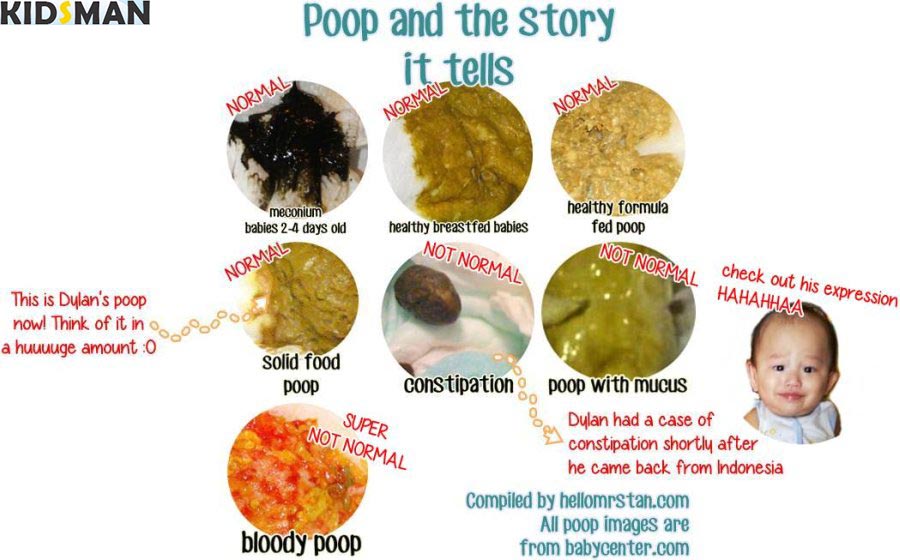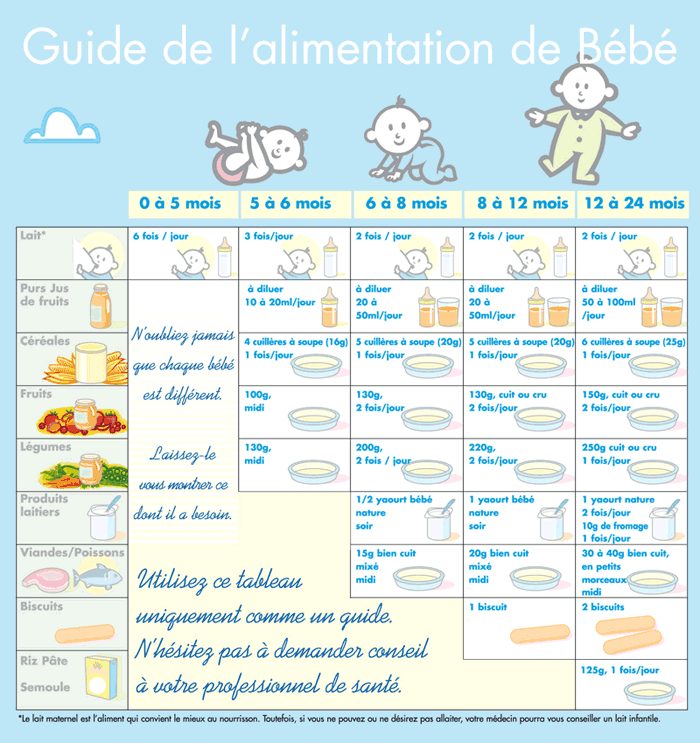Do all breastfed babies cluster feed
Cluster Feeding: Ages, Signs and Tips
By the time baby arrives, you’ve probably mentally prepared for the frequent wakeups you’re about to endure. Sleep deprivation as a new parent is par for the course, after all. What may come as a surprise, however, is the pure exhaustion that accompanies newborn cluster feeding. It’s one of those new parenting things you won’t truly understand until you actually experience it; but it’s totally normal and, thankfully, doesn’t last forever (though it won’t feel like much of a consolation when you’re in the thick of it). Still, it’s helpful to know what to expect so you can mindfully manage the situation rather than panic when the feeding frenzy begins. Ready to get the lowdown on all things newborn cluster feeding? We’re sharing what it is, why it happens, when it starts and how long it’ll last—plus, some tips for how to cluster feed and prepare yourself for the nonstop breast or bottle buffet ahead.
In this article:
What is cluster feeding?
Why do babies cluster feed?
When does cluster feeding start?
How long does cluster feeding last?
Signs of cluster feeding
Tips for how to cluster feed
How to stop cluster feeding
What Is Cluster Feeding?
You may have heard the term thrown around by other parents, or perhaps a lactation consultant said it during a blurry bedside visit at the hospital. So what is cluster feeding, exactly? Baby cluster feeding is pretty much what it sounds like: when your little one wants to be fed in “clusters” throughout the day. Cathleen Hemphill, RN, a nurse and lactation consultant in Raleigh, North Carolina, explains that in their first few days of life, babies typically need to be fed a minimum of eight times in a 24-hour span. But before you set your clock and your expectations, know that newborns typically don’t follow a predictable feeding schedule. “Most infants will want to feed more often than this and will cluster or group several feedings in a shorter amount of time,” Hemphill says.
In general, a typical feeding for a newborn will last between 15 and 20 minutes, leaving baby nourished and satisfied for about three to four hours, according to the American Academy of Pediatrics (AAP). In contrast, when they’re cluster feeding, “a baby has several feedings within a short amount of time followed by a longer stretch of sleep,” says Amy Peterson, IBCLC, a lactation consultant in Jerome, Idaho. You’ll know that baby is cluster feeding—and that it’s not just their preferred eating schedule—when their routine suddenly changes for two or three days and then just as swiftly returns to a more regular feeding pace.
You’ll know that baby is cluster feeding—and that it’s not just their preferred eating schedule—when their routine suddenly changes for two or three days and then just as swiftly returns to a more regular feeding pace.
Cluster feeding is completely normal, and while not every baby cluster feeds, it can happen with any newborn, regardless of whether they’re breastfed or formula-fed. That said, it’s often harder if you’re a nursing mom, as your milk is likely still coming in, and you may be struggling with breastfeeding—physically or mentally. If you’re exclusively pumping, it may feel like you can’t keep up with baby’s demands—especially if you don’t have a reserve of milk ready to go yet. That said, if you formula feed, you’ll still notice baby’s increased appetite but will have the convenience of being able to supply more milk on demand, which the AAP says is a safe and appropriate way to manage cluster feeding.
Why Do Babies Cluster Feed?
No one knows exactly why babies cluster feed, says Dyan Hes, MD, a pediatrician in New York City, but there are several strong theories. A common belief among experts is that it happens when a newborn is going through a physical or developmental growth spurt. Newborn cluster feeding could also correlate with baby’s routine in utero. “Most pregnant mothers know from fetal movements that as soon as they go to bed, their baby starts moving, and then about four hours later, they have to get up to the bathroom. This is a biological rhythm of activity that continues for the first weeks of life. We see infants feed well around a mother’s previous bedtime, then four hours later they will perhaps start to cluster feed,” explains Hemphill.
A common belief among experts is that it happens when a newborn is going through a physical or developmental growth spurt. Newborn cluster feeding could also correlate with baby’s routine in utero. “Most pregnant mothers know from fetal movements that as soon as they go to bed, their baby starts moving, and then about four hours later, they have to get up to the bathroom. This is a biological rhythm of activity that continues for the first weeks of life. We see infants feed well around a mother’s previous bedtime, then four hours later they will perhaps start to cluster feed,” explains Hemphill.
If you’re breastfeeding, newborn cluster feeding may cause you to worry or wonder if baby’s increased appetite is indicative of low milk supply or if you’re just not feeding them enough. It’s understandable why your mind would jump to that conclusion, but in reality, the opposite is happening. “In the first few days, a baby’s cluster feeding helps to increase and establish mom’s milk supply,” explains Jerrianne Webb, RN, a nurse and lactation consultant in Raleigh, North Carolina. “The baby’s frequent nursing assists in the hormonal process of transitioning mom’s first milk, colostrum, into the abundant mature milk, a transition that usually occurs between postpartum days three and seven.”
“The baby’s frequent nursing assists in the hormonal process of transitioning mom’s first milk, colostrum, into the abundant mature milk, a transition that usually occurs between postpartum days three and seven.”
Oftentimes, babies cluster feed in the early evening, according to Hes, which also happens to coincide with the infamous “witching hour” for babies. Since the only way cluster-feeding babies know how to express their need to eat is through crying, it can be difficult to discern whether they’re being fussy because they’re hungry or because it’s just that time of day. If baby is inconsolable in the early evening but doesn’t seem to want to eat, it could be the result of overstimulation or possibly colic.
When Does Cluster Feeding Start?
Now that you understand what it is and why it happens, you may be wondering: When does cluster feeding start? Sorry to say, you may not get much of a breather after the exhausting work of labor and delivery. According to Hemphill, newborn cluster feeding can start as early as baby’s second day of life. While this may be the last thing you want to deal with while recovering and trying to get the hang of this whole breastfeeding thing, it can actually be very helpful. “[Cluster feeding] is the principle of supply and demand in breastfeeding,” explains Webb. “Baby’s demand [for milk] increases, which, in turn, increases Mom’s supply.” In those first few days after baby is born, the body is working hard to produce milk and increase supply as needed, and since this is triggered by baby feeding from the breast, the more often they feed, the more milk the body will ultimately produce.
While this may be the last thing you want to deal with while recovering and trying to get the hang of this whole breastfeeding thing, it can actually be very helpful. “[Cluster feeding] is the principle of supply and demand in breastfeeding,” explains Webb. “Baby’s demand [for milk] increases, which, in turn, increases Mom’s supply.” In those first few days after baby is born, the body is working hard to produce milk and increase supply as needed, and since this is triggered by baby feeding from the breast, the more often they feed, the more milk the body will ultimately produce.
How Long Does Cluster Feeding Last?
You’re sleep-deprived and desperate for relief—so you want to know: Exactly how long does cluster feeding last? Baby cluster feeding happens in bursts; each usually lasts a few days at a time, says Webb. However, during the first few weeks of life, as your supply continues to build, you can expect baby to want to cluster feed more often than not. After this initial stage, though, you’ll be more equipped to determine if and when baby will go through another cluster feeding phase based on typical development charts. “After the first few weeks, breastfed babies become more predictable,” she says. Cluster feeding ages typically align with growth spurts and occur at three weeks, six weeks, three months and six months. That said, the first three weeks of newborn cluster feeding is often the longest consistent stretch and the most intense for parents.
“After the first few weeks, breastfed babies become more predictable,” she says. Cluster feeding ages typically align with growth spurts and occur at three weeks, six weeks, three months and six months. That said, the first three weeks of newborn cluster feeding is often the longest consistent stretch and the most intense for parents.
Signs of Cluster Feeding
As babies grow, they slowly start needing more and more milk in one feeding to satisfy their appetite. So how do you know if their increased need for milk is, in fact, cluster feeding or just part of their normal growth and development? Here are some common signs of cluster feeding to look for:
- Having a normal, full feeding, and then wanting to be fed again 30 to 60 minutes later—often eating just as much as they would in a regular feeding
- Sleeping deeply for long stretches of time after two or three close feedings
- Acting frustrated during feedings, searching for the nipple when it’s right in front of them or latching on and off
- Acting fussy or irritable when they’re awake but not on the breast
- Eating in frequent, short spurts close together
- Perpetual feedings often occur in the early evening and nighttime hours
Tips for How to Cluster Feed
For a breastfeeding parent, cluster feeding is exhausting in every sense of the word, especially if you’re still trying to get the hang of nursing. Here are some things you can do to make it a little more manageable:
Here are some things you can do to make it a little more manageable:
- Keep track of how many feedings the baby has had. Peterson says, “Cluster feeders still have the expected number of feeds, just not spaced evenly throughout the day/night.”
- Have your partner or a support person help by doing as much as possible between feedings so you can rest
- Avoid trying to force or delay feedings in an effort to get baby back on a schedule, as this will just make them fussier
- Monitor their weight gain if you need peace of mind that they’re getting enough milk, suggests Peterson. “Expect babies to gain about an ounce a day (or more) once mom’s milk shifts from colostrum to milk,” she says
- Stay hydrated and nourished to keep yourself healthy and your supply ample throughout this phase
How to Stop Cluster Feeding
You may be eager to get a little break, but if you’re wondering how to stop cluster feeding, the truth is: it just has to run its course. The best thing you can do is surrender and let baby take the lead. Hemphill stresses the importance of not forcing or delaying feedings in an effort to make cluster feeding end: “The American Academy of Pediatrics, WHO, and UNICEF recommend that infants feed on demand and as often as they want, day or night.”
The best thing you can do is surrender and let baby take the lead. Hemphill stresses the importance of not forcing or delaying feedings in an effort to make cluster feeding end: “The American Academy of Pediatrics, WHO, and UNICEF recommend that infants feed on demand and as often as they want, day or night.”
Newborn cluster feeding is hard on parents, but you can take comfort knowing that it won’t last forever. Until it passes, lean on your support system and rest as often as possible. You’ve got this.
About the experts:
Cathleen Hemphill, RN, BSN, IBCLC, is a nurse and lactation consultant at the University of North Carolina’s Rex Hospital in Raleigh, North Carolina.
Dyan Hes, MD, is a pediatrician and the medical director of Gramercy Pediatrics in New York City. She earned her medical degree from the Sackler School of Medicine at Tel-Aviv University in 1997.
Amy Peterson, IBCLC, is a lactation consultant for Evenflo Feeding and co-author of Balancing Breast and Bottle: Feeding Your Baby. She holds a Bachelor’s degree in early childhood education and works out of Jerome, Idaho.
She holds a Bachelor’s degree in early childhood education and works out of Jerome, Idaho.
Jerrianne Webb, RN, IBCLC, is a lactation consultant for the University of North Carolina. She earned her nursing degree from Presbyterian Hospital School of Nursing in Charlotte, North Carolina.
Please note: The Bump and the materials and information it contains are not intended to, and do not constitute, medical or other health advice or diagnosis and should not be used as such. You should always consult with a qualified physician or health professional about your specific circumstances.
Plus, more from The Bump:
How Much Should a Newborn Eat?
Are There Foods to Avoid While Breastfeeding?
Top 12 Benefits of Breastfeeding
What You Should Know About Cluster Feeding
Written by WebMD Editorial Contributors
In this Article
- How to Know It’s Cluster Feeding
- Causes of Cluster Feeding
- When Is Cluster Feeding Not Considered Normal?
- How to Deal With Cluster Feeding
- Benefits of Cluster Feeding
- Challenges of Cluster Feeding
When infants get to a certain age they may begin to want to breastfeed more frequently than usual. Often, the length of the feedings will decrease as the frequency increases. While this is normal, it can be concerning or confusing to new parents.
Often, the length of the feedings will decrease as the frequency increases. While this is normal, it can be concerning or confusing to new parents.
Breast or bottle feeding that happens frequently and isn’t necessarily due to hunger is referred to as cluster feeding.
How to Know It’s Cluster Feeding
It's normal for babies to cluster feed. It is especially common during the early days of breastfeeding. Cluster feeding is more common in the late afternoon or early evening, but it can happen at any time of the day.
Cluster feeding usually happens between three weeks to six weeks after birth. During this period, your baby experiences growth spurts. As a result, they may require more milk than usual. Throughout these times, it's important to make sure you provide enough milk to keep your baby full.
You should consider it normal for your baby to cluster feed if you notice the following:
- Your baby is gaining reasonable weight.
- The process occurs during a limited time, like 3-4 hours a day.

- Your baby is having a lot of dirty and wet diapers.
- The process occurs after birth when you have an adequate milk supply.
- Your baby has short rests or sleeps between these feedings.
- Your baby feeds for a few minutes then pulls off and on the breast.
- Your baby cries and is fussy during this time.
If you are concerned that your milk supply is inadequate for your baby’s needs, talk to your pediatrician.
Causes of Cluster Feeding
Some babies do not cluster feed at all. The following are reasons why your baby could be cluster feeding:
Your baby is undergoing a growth spurt. If your baby is at a stage where they are experiencing a growth spurt, they will naturally need more nourishment. During these times, your baby may want to nurse every 30 minutes to an hour. In the first month alone, growth spurts can happen every few days or even weekly.
These growth spurts typically happen when your baby is around two to three weeks, six weeks, three months, and six months old. However, your baby's growth spurts may not happen at these exact times as every baby is different. Growth spurts usually last a few days.
However, your baby's growth spurts may not happen at these exact times as every baby is different. Growth spurts usually last a few days.
Developmental milestone. Your baby may be undergoing a developmental milestone during the first six months. When your child experiences physical and psychological changes, they may need nutrition. The process can cause your baby to cluster feed.
When Is Cluster Feeding Not Considered Normal?
There are times when your baby may frequently breastfeed to the point that you need to involve your pediatrician. Such instances include:
- Your baby breastfeeds non-stop.
- Your baby cries unless they are breastfeeding and continues to show signs of hunger.
- Your baby appears jaundiced (yellowing of the skin and the whites of the eyes), becomes lethargic (appearing tired and dull), or has tremors after long periods of non-stop nursing.
- Your baby is not gaining weight.
- Your baby is not producing wet and dirty diapers.

How to Deal With Cluster Feeding
Cluster feeding doesn't mean you don't have enough milk. However, some parents are concerned that they may not be producing enough milk for their baby during cluster feeding episodes. If you are in such a situation, be sure to:
- Stay hydrated.
- Find a breastfeeding partner to bring you drinks and snacks and keep you entertained during the cluster-feeding episodes.
- Stay prepared for your baby’s needs.
- Do not miss your meals.
- Relax, get comfortable, and follow your baby’s lead.
- Know when your baby is hungry.
When your baby is full but can’t seem to stop craving more, you may use non-nutritive sucking to soothe them. For instance, using a pacifier instead of breastfeeding your baby every 30 minutes will save you and your baby lots of fussiness and time.
Benefits of Cluster Feeding
Some of the advantages of cluster feeding include:
- Providing your baby the nourishment they need to grow
- Helping to soothe your baby
- Ensuring your baby gets enough sleep after a satisfying nursing session
- Providing comfort, security, and reassurance that sustain your baby's emotional needs
- Boosting your milk supply to fit the needs of your baby
Challenges of Cluster Feeding
Cluster feeding can make you feel emotionally and physically drained. Studies show that many parents may experience frustration or fatigue from cluster feeding. Some lose confidence in their ability to breastfeed.
Studies show that many parents may experience frustration or fatigue from cluster feeding. Some lose confidence in their ability to breastfeed.
You may become worried that you aren't producing enough milk, especially if your baby takes a long time to settle when nursing or your breasts feel empty. Another challenge of cluster feeding is the sleep deprivation that comes about when your baby wakes up frequently to nurse.
During periods of cluster feeding, parents may find it helpful to talk with a lactation consultant or pediatrician. Your doctor may also recommend additional ways to care for your nursing baby.
What is cluster power?
08.11.2022
Often talk about feeding babies as if it were on a strict schedule - every few hours, with emptying of the breast, but rarely talk about cluster feeding.
“Cluster feeding is a term used to refer to natural periods of time when your newborn wants to feed frequently for hours and often for many short periods of time. ” - Janelle Ferry, MD, Director of Feeding, Nutrition and Infant Development in Florida Pediatric Neonatology. This can happen to babies who are both breastfed and bottle-fed.
” - Janelle Ferry, MD, Director of Feeding, Nutrition and Infant Development in Florida Pediatric Neonatology. This can happen to babies who are both breastfed and bottle-fed.
Not only does this sound boring, it's actually true. However, cluster feeding for newborns and older children is normal and even has its benefits. "Cluster feeding helps mothers increase their breast milk to keep up with their baby's nutritional needs," says Jessica Madden, MD, International Council on Breastfeeding Council (IBCLC) certified pediatrician and neonatologist and healthcare professional.
What is cluster nutrition?
Cluster feeding is a period of more frequent feeding. “Most newborns and toddlers breastfeed about every two to three hours, but with cluster feeding they can have multiple feeds in a row with only about an hour between each feed,” says Dr. Madden.
Cluster feeding is a normal part of lactation that depends on supply and demand. The baby "demands" food, and the nursing baby's body learns to "supply" it based on the baby's feedback on their needs.
“Cluster feeding is a natural mechanism by which a baby communicates its milk needs to its mother,” says Dr. Ferry. "These frequent feedings send a message to the maternal feedback pathways in the brain, resulting in more milk for the mother."
But again, this can happen to formula-fed babies, because it's a programmed mechanism in babies. Formula-fed babies can also cluster during growth spurts, says Dr. Ferry. “Because the nutritional situation is slightly different, it is often not as pronounced as with breastfeeding. Often with formula feeding, the infant will begin to eat more formula at each feeding.”
What is the typical age of cluster feeding?
Cluster feeding of newborns is common, but it can occur during the first few years of an infant's life.
"Typically, there is a growth spurt on the second day of a baby's life and babies are fed in clusters to stimulate breast milk production," says Demi Lucas, IBCLC of The Lactation Network. "Other common periods of growth spurts are the first week, 2 to 3 weeks of age, 6 weeks of age, 8 weeks of age, 3 months of age, and 6 months of age."
"Other common periods of growth spurts are the first week, 2 to 3 weeks of age, 6 weeks of age, 8 weeks of age, 3 months of age, and 6 months of age."
Lucas notes that this age also usually coincides with growth spurts when babies need more milk (or formula) to support their rapid development.
How long does a cluster meal last?
Cluster feeding can feel like a never ending cycle where the baby is laid down only to be picked up again. But the good news is that it usually lasts about two to three days, says Lucas, "then the babies go back to their normal feeding schedule."
Lukas also says that cluster feedings usually happen at the same time each day. “Cluster feeding often happens in the late afternoon or evening,” says Lucas. Dr. Ferry says nursing periods typically last "several" hours. But if it happens all day, every day, it could be a sign of problems.
"If cluster feeding lasts more than a couple of days, it's a good idea to talk to a lactation consultant and/or baby's primary care provider to see if there are still issues that need to be addressed," says Dr. Ferry.
Ferry.
What is the difference between cluster feeding and inefficient feeding?
Lucas emphasizes that cluster feeding is normal and does not mean your child is eating inefficiently. But constant feeding can be stressful and make parents wonder if their baby is getting enough milk. “The inability to quantify how much milk a baby sucks while breastfeeding exacerbates this problem,” she adds.
Dr. Ferry says that the signs of effective feeding of a baby include:
- Satisfaction between feedings
- Having wet and dirty diapers
- Weight gain according to the age curve
In addition, Lucas says that cluster feeding stops after about two to three days - if the cluster feeding period continues for longer, this may be a sign that the baby is having trouble getting enough food.
There are many reasons for inefficient feeding! Hormonal problems or previous surgeries can affect milk production. Dr. Ferry says a poor latch and oral restrictions can also prevent a baby from getting enough milk.
This is why latching is critical to ensure that the baby is fed and milk supply is stable.
Dr. Ferry and Lucas both offer to arrange a meeting with a lactation consultant to discuss any concerns. They will be able to determine if the baby has feeding problems and, if so, what the underlying cause is and how it can be corrected.
How to stop cluster feeding
You don't actually need to stop cluster feeding - the baby will naturally grow out of the cycle within a few days. "It's how our bodies increase the amount of breast milk we produce for our babies, so it can't be prevented, stopped, or controlled," says Dr. Madden. "We need to look at it not as a problem, but as a normal part of breastfeeding."
However, cluster feeding may be excessive
Similarly, pumping parents will need to pump more frequently during cluster feeding periods—once per feeding. Powerful pumping involves pumping for 15-20 minutes, waiting for 10 minutes, and then pumping again for 10 minutes. And then repeat again. Even if there is no milk, it stimulates the breasts.
And then repeat again. Even if there is no milk, it stimulates the breasts.
How to support a breastfeeding woman during cluster feeding
"Cluster feeding can be exhausting for all family members and can make anyone caring for a baby feel a little helpless," says Dr. Ferry.
"A non-breastfeeding parent can support their partner by helping with other baby care tasks," says Lucas. "Changing diapers, comforting the baby, bathing, dressing the baby, and providing snacks, food, and water are extremely helpful."
Caring for a child is exhausting and often takes an entire village. So try to get help when you need it, and know that the hardest times won't last forever.
Original
Photo en.freepik.com
Dangerous game: feeding according to the regimen
Emma Pickett ( Emma Pickett ) is a former primary school teacher. She entered the counseling profession when she became a mother herself; volunteered at the National Department of Health's Breastfeeding Helpline. She leads a maternal support group in one of the districts of London, since 2011 she has been advising as an IBCLC. Publishes articles on his site http://www.emmapickettbreastfeedingsupport.com/
She leads a maternal support group in one of the districts of London, since 2011 she has been advising as an IBCLC. Publishes articles on his site http://www.emmapickettbreastfeedingsupport.com/
The Dangerous Game: Scheduled Feeding
In one way or another, new mothers are taught that there is a factor of great importance. This is the interval between the end of the previous feeding and the start of the next.
It seems to be given a meaning beyond the bounds of reason. They see these magic numbers - 90 minutes, 2 hours, 3 hours - as a measure of something sacred.
And this is nonsense.
There are mothers who relax at home and chirp in a cozy nest with their beautiful newborn. There is a disc in the DVD player, a cup of fresh tea is poured, I just chatted with my friend. Breastfeeding is going well. The weight is gaining. The child is satisfied.
But when a baby expresses a desire to breastfeed just 40 minutes after feeding instead of the expected hour and a half, they get upset, they get the impression that something is going wrong, they are doing something wrong. A friend's child endures longer. Doubts creep in.
A friend's child endures longer. Doubts creep in.
We, adults, take a cup of tea, a glass of water, sweets, snacks. We respond sensitively and flexibly to our personal needs, which depend on the time of day, temperature, mood, and our energy level. Many go to bed with a glass of water or drink water throughout the day. I don't know any adult who looked at his watch and said, "30 minutes until my next drink of water. It remains to wait a bit." But we expect our growing babies to be governed by artificial notions of routine.
Last week I spoke to a young mother, she was completely PLEASED with her feeding rhythm, but at the same time she was worried if she should increase the interval between feedings, because "this is how it should be done." When I explained to her that this was not necessary, she became even happier than she was.
Where did these ideas come from? They didn't come from someone with a lactation education, not from a lactation consultant who did prenatal care, not from books written by pro-breastfeeding experts.
They came from popular books on childcare, relatives and friends.
And they got there because of a fundamental ignorance in the field of breastfeeding and the physiology of lactation. Often these ideas come from the middle of the 20th century. At the time, recommendations were based on formula feeding norms and pseudoscience. And it's all incredibly dangerous.
Until now, there are people around a nursing mother who are convinced that a child who has eaten after four hours instead of three will receive more milk. There are also people who believe that a mother should wait and keep the baby from breastfeeding until the breast is full. There are those who believe that if the baby wants to return to the breast after an hour, this may indicate a problem, in particular, a lack of milk.
It is terrible that the basic knowledge of how milk is made does not reach those who need it.
So what is the norm? There are many rules.
The newborn should be breastfed at least 8-12 times a day. This means that some will feed every three hours, while others will feed more than once every two hours. Some babies may breastfeed every 10 minutes for an hour. Some - 10 minutes every 2 hours, some - 40 minutes every 2 hours. The younger the child, the more likely cluster feeding Such a baby will be unhappy if the breast is taken away not for a few minutes, but for a longer time. Cluster feeding is especially typical for the evening.
This means that some will feed every three hours, while others will feed more than once every two hours. Some babies may breastfeed every 10 minutes for an hour. Some - 10 minutes every 2 hours, some - 40 minutes every 2 hours. The younger the child, the more likely cluster feeding Such a baby will be unhappy if the breast is taken away not for a few minutes, but for a longer time. Cluster feeding is especially typical for the evening.
A typical phone call to the national breastfeeding support service: "My baby used to sleep in the evenings, but now he is awake for 3-4 hours. The only thing that calms him is the breast. I feel like I don't have enough milk because it hangs on it for an eternity. So there's nothing there."
When a baby often changes from one breast to another, he gets a small amount of milk with a high fat content, and thus relieves tension at the end of a long day. Children know very well what they are doing.
Soon the rhythms will change again. Some children will start to do long intervals during the day, but not all.
Some children will start to do long intervals during the day, but not all.
One of the very popular baby care books (which I'd rather not name) gives a strong indication that frequent feeding may be acceptable during growth spurts, as this "sacred cow" of feeding intervals is of the utmost importance. A three-month-old baby can feed at intervals of three hours, but if they do not increase at 4 months, then God forbid. The same author believes that a woman can measure the amount of milk by making a test of her production through pumping, as if the amount expressed would be equivalent to the amount of milk that the child sucks from the breast. But pumping and breastfeeding are completely different processes. What this author doesn't know about breastfeeding could fill an encyclopedia.
Particularly dangerous is this author's message that long intervals are "better" and "correct". This leads new mothers to doubt milk supply without any justification. After reading this author's fan forums, I know that many mothers end up supplementing with formula in an effort to achieve those magical moments.
Why?
Children lose exclusive breastfeeding, parents stop following official recommendations from the Ministry of Health due to discrepancies with information from the child care book.
There are parents who choose formula for a variety of reasons. Some do it with joy, some with horror. But doing this just because you read the wrong information in a child care book seems like a real tragedy to me.
Our knowledge of breasts has changed over the last 20 years. Much of the selfless work has been done in Australia by scientists such as Prof. Peter Hartmann and Dr. Donna Geddes, Stephen Daly and their teams.
We thought that most women have more or less the same number of milk ducts, but on ultrasound we found that there are fewer than previously thought, and there are many variations. One woman may have 4 nipple holes, another 18.
There are also other discoveries, in particular about the capacity of the breast, and we must talk about them here. The baby partially receives milk that is produced during feeding, and partially - that which has accumulated between feedings.
The baby partially receives milk that is produced during feeding, and partially - that which has accumulated between feedings.
Ultrasound showed that the capacity of the glandular tissue cannot be determined based on the size of the breast. Breast size is obvious, but glandular tissue capacity is not. The range of capacity of glandular tissue in women is huge.
One woman can store 80 ml in one breast, another 600 ml. And it's not a typo.
A woman with small breast capacity can produce enough milk in 24 hours and her baby will gain weight well. But these babies have to eat more frequently to get access to milk.
Will this mother have problems with her milk supply? No, absolutely not. Her baby may continue to breastfeed every two hours or more, throughout the day, for several months, feed in fractions at certain times, and perhaps wake up a couple of times a night to eat. Her friend's baby may feed less often and get the same amount of milk.
When breasts are full, milk production is reduced. When the breast is empty, we produce more milk. When babies eat often and from incomplete breasts, they receive milk with a high fat content. Frequent feedings are of high value.
When the breast is empty, we produce more milk. When babies eat often and from incomplete breasts, they receive milk with a high fat content. Frequent feedings are of high value.
And since human milk contains 3-5% fat, compared to some other mammals, which have fat content up to 40% and even more, it becomes clear why our children need to feed often.
But let's imagine a mother with small breast capacity reading this book on child care. She may become nervous that her baby wants to eat every two hours. She may try to increase the intervals between feedings in the mistaken belief that this will increase the baby's milk intake. Her breasts will be at their capacity for longer and milk production will slow down, the breasts will be signaled to reduce milk production.
In trying to increase the interval between feedings as suggested in the book, she can actually reduce her milk production in 24 hours and thereby harm herself and the baby.
What should we offer this mother who can't increase her intervals like her friends do?
The first is to congratulate her for feeding on demand. Luckily, she didn't know what to feed in the early stages of lactation, so her milk production is at its peak. Let's make sure the rest of the breastfeeding is going well: the feeding is comfortable for her, the baby looks satisfied after the feeding (although it may take an hour instead of three), the latching is effective and the positions are as comfortable as possible. If this is all true, and her only concern is that the magic interval is not being reached, we need to make sure she knows how milk is made. Perhaps she is one of those mothers who has small breast capacity and needs to feed more frequently over the course of 24 hours to increase the amount of milk the baby will receive. And, most likely, this is the only thing she can do. And what happens next depends on acceptance, approval and attitude.
Luckily, she didn't know what to feed in the early stages of lactation, so her milk production is at its peak. Let's make sure the rest of the breastfeeding is going well: the feeding is comfortable for her, the baby looks satisfied after the feeding (although it may take an hour instead of three), the latching is effective and the positions are as comfortable as possible. If this is all true, and her only concern is that the magic interval is not being reached, we need to make sure she knows how milk is made. Perhaps she is one of those mothers who has small breast capacity and needs to feed more frequently over the course of 24 hours to increase the amount of milk the baby will receive. And, most likely, this is the only thing she can do. And what happens next depends on acceptance, approval and attitude.
Let her continue this way, ideally until 6 months of age, when her baby will get the most benefit from exclusive breastfeeding.
She will need more support to feed outside the home. She may need to learn how to feed in a sling or feed in different positions in different settings. She may have to wake up more often than her breastfeeding friends, although at night the intervals are longer anyway and she can rest. Safe co-sleeping to help her.
She may need to learn how to feed in a sling or feed in different positions in different settings. She may have to wake up more often than her breastfeeding friends, although at night the intervals are longer anyway and she can rest. Safe co-sleeping to help her.
And this is just a matter of a few months. After the introduction of complementary foods, feeding rhythms will change. For several months, a person can cope with anything. Jars of cucumbers even last longer. We change our toothbrush less frequently. On the scale of our adult life, this is the blink of an eye.
What certainly won't help these mothers is the relentless demand to increase the intervals between feedings. Allegedly, if they let the baby cry for 15 minutes, then he will get more milk, and their life will change.
I will tell you about myself. My children under 6 months of age did not pause for more than two hours during the day and not much longer at night. In the book where I wrote everything down, I read that at three months I fed the baby about every 90 minutes.











